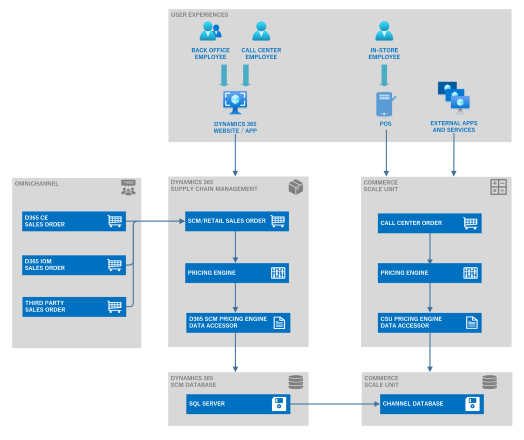Note
Access to this page requires authorization. You can try signing in or changing directories.
Access to this page requires authorization. You can try changing directories.
Important
This content is archived and is not being updated. For the latest documentation, go to What's new or changed in Dynamics 365 Supply Chain Management. For the latest release plans, go to Dynamics 365, Power Platform, and Cloud for Industry release plans.
| Enabled for | Public preview | General availability |
|---|---|---|
| Users, automatically |  Apr 10, 2023
Apr 10, 2023 |
- |
Business value
Traditional B2B businesses are increasingly considering moving to an omnichannel sales strategy to sell directly to customers and gain more control over pricing and margins. However, this change can be complex because it leads to massive changes of pricing models and pricing rules. The new attribute-based omnichannel pricing feature for Dynamics 365 Supply Chain Management supports B2B companies that are converting to this strategy. It enables sales managers to effectively plan and manage omnichannel selling prices by setting price attributes on customer, product, and order segments.
Feature details
The new attribute-based omnichannel pricing feature lets you manage omnichannel sales and pricing using Dynamics 365 Supply Chain Management. The solution leverages the Commerce Scale Unit (CSU) Core feature of Dynamics 365 Commerce to help traditional B2B companies embrace the new normal of omnichannel sales.
The new attribute-based omnichannel pricing feature enables B2B companies to:
- Manage and calculate pricing in one central location and provide transparent pricing across all channels, which is essential for aligning pricing strategy across multiple channels.
- Calculate prices quickly while considering a wide range of business factors, including the base price, sales trade agreement price, long-term discount deal, short-term promotional discounts, and retrospective rebate calculations for each sales order. Real-time pricing calculation is key to a unified omnichannel sales customer experience, downwards ordering, and the fulfillment process.
- Create pricing models based on each product's pricing differentiators, order types, and customer segments. In other words, implement segmentation based on customer, product, and order price attributes.
- Manage complex pricing structures with price component breakdowns and define margin component price adjustments on top of the item base price. On ordering, pricing details can provide a price component breakdown for future advanced analysis.
- Manage omnichannel sales easily when converting B2B and B2C pricing to consider the discount concurrency, bundle sales, mandatory items, and bonus item pricing rules.
- Simulate prices and view detailed price calculations.
- Leverage enhanced discount budget control to avoid margin leakage from fund consumption.
- Use APIs on the CSU for native Dynamics 365 Commerce point of sale or third-party retrieval of the calculated pricing.

See also
Pricing management overview (docs)